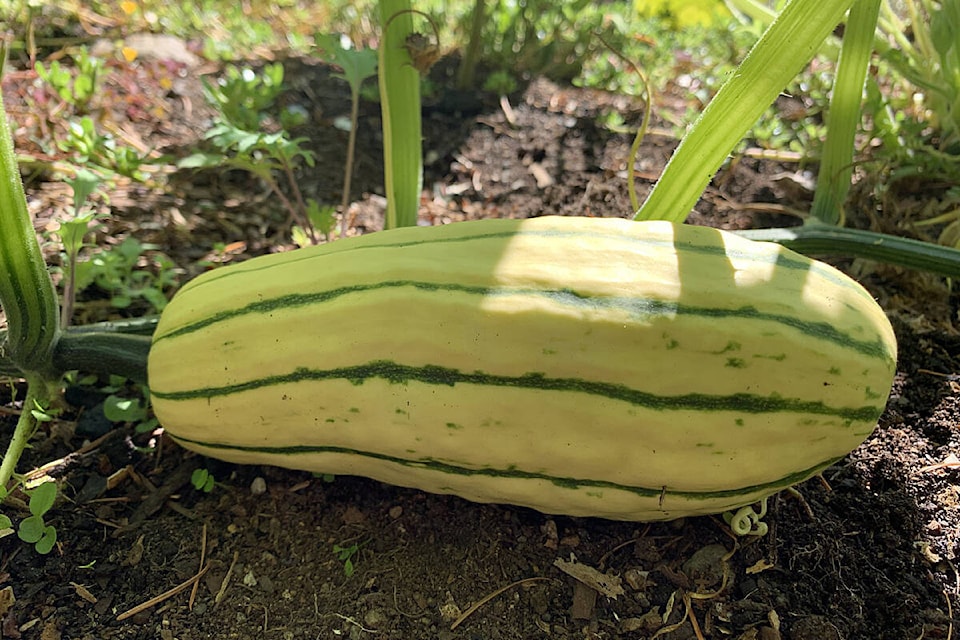What beautiful rain we had the last couple weeks, it filled all my rain barrels. My plants were happy. The daylily leaves stood up again after laying down on the ground for days.
I lost two grapevines over winter and almost half of my Himrod seedless. I had about five nice clusters almost ready to pick but the raccoon was faster than me for the harvest. I hope he doesn’t find the blackberries.
It took awhile for the sweet basil and the holy basil to take off but all the plants now are doing great. I find that the basil does better when it doesn’t get too hot of afternoon sun. Holy basil is excellent for tea. Taken from the internet: “Holy basil is also known as tulsi. All parts of the holy basil plant act as an adaptogen. An adaptogen is a natural substance that helps your body adapt to stress and promotes mental balance. It also contains vitamin A and C, calcium, zinc, iron and chlorophyll.”
I plant my squash seedlings along the border of some of my beds. I don’t cut the lawn (weeds) in the summer and let them sprawl wherever they want to go. Sometimes it feels like a jungle, so I have to start pruning some of the side shoots just like I do with the tomato plants ( more information on the website link).
Many vining plants benefit from pruning, and squash is no exception! If you want to maximize your yields, consider pruning these rambling vines for increased pollination, airflow, and squash production.
Pruning may seem like an unnecessary chore - Why would you cut away parts of your plants? Ironically, removing some vines and leaves can actually enhance production for bigger, better yields.
This theme is common across many vining plants, including tomatoes and cucumbers. When you remove side shoots and suckers, it frees up the plant’s energy to focus on flower and fruit production. Better yet, you can save space, deter pests, and prevent diseases. Zucchini, pumpkins, butternuts, and more are all fair game for pruning.
However, the methods for pruning differ between each variety. Long vines benefit from tip pinching, while bushy zucchini plants benefit from leaf removal. Some plants benefit from removing extra flowers and fruits. You can also trellis vines upward to grow more in a smaller space.
Winter squash and all the pumpkin cousins tend to take up massive amounts of space. These vines will overgrow your garden if you let them! Pruning and trellising ensure that you maximize production without wasting space. Once your vines are off to the races, it’s helpful to remove the growing tips. Ideally, you have already pruned away the suckers and trained your winter squash plant with just one or two vines. The main vine(s) should reach 10-15 feet in length, depending on the variety. At this point, you can snip off the tips
For the zucchini plants pruning is a great way to revitalize production in mid-to-late summer. Cutting back excess foliage is like another reminder to your zucchini to focus on flowers and fruits. Many plants think they are dying later in the season. If you remove about one-third of the leaves, you can “trick” the plant into continuing its reproductive cycles. The result is a longer harvest window of zucchini! Ensure that the plant keeps 60-70 per cent of its foliage at all times.
For more information: 250-558-4556 jocelynesewell@gmail.com




